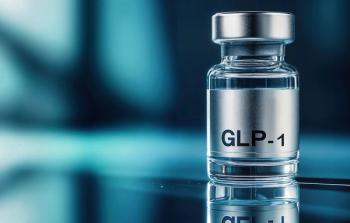
FDA Grants Breakthrough Designation to Johnson & Johnson’s Novel Treatment for HR-NMIBC
TAR-200 has a novel targeted releasing system for the treatment of patients with Bacillus Calmette-Guérin-unresponsive high-risk non-muscle-invasive bladder cancer who are ineligible for bladder removal surgery.
The FDA has granted Breakthrough Therapy Designation (BTD) to Johnson & Johnson’s TAR-200, which has shown potential in the treatment of patients with Bacillus Calmette-Guérin (BCG)-unresponsive high-risk non-muscle-invasive bladder cancer (HR-NMIBC) who are ineligible for or elected not to receive bladder removal surgery. The FDA action represents Johnson & Johnson’s thirteenth BTD in the oncology space.1
“TAR-200 represents a novel interventional approach for the treatment of localized bladder cancer where today, unfortunately, options are limited and include antiquated BCG therapy or radical cystectomy,” Kiran Patel, MD, vice president, Clinical Development, Solid Tumors, Johnson & Johnson Innovative Medicine, said in a press release. “This [BTD] recognizes TAR-200 as a promising advancement and marks an important step forward in our innovative focus to transform the treatment of bladder cancer.”1
TAR-200 has an investigational targeted releasing system that allows for a controlled release of gemcitabine into the bladder, which can sustain local drug exposure over a period of weeks at a time, according to Johnson & Johnson. The drug’s safety and efficacy have been analyzed in patients with muscle-invasive bladder cancer across the
The FDA designation was based on findings from the open-label, Phase 2b SunRISe-1 (
The trial’s primary endpoint is complete response rate at any time point, with secondary endpoints that include duration of response, overall survival, pharmacokinetics, quality of life, safety, and tolerability. Enrollment was closed for cohorts one and three on June 1, 2023.1
These data were presented as a late-breaking mini-oral presentation (abstract
The FDA grants the breakthrough designation to accelerate the development and regulatory review of medications for serious or life-threatening conditions based on preliminary clinical data showing a substantial improvement over currently available treatments on a clinically significant endpoint(s).
HR-NMIBC is more likely to recur or spread beyond the urothelium before progressing to become invasive bladder cancer, compared to low- and intermediate risk NMIBC. HR-NMIBC comprises 15% to 44% of patients with NMIBC. The disease is characterized by a high-grade, large tumor size, presence of multiple tumors, and CIS.2,3
Current treatment recommendations for patients with NMIBC include radical cystectomy among those unresponsive to BCG therapy, which has a cancer-specific survival rate of 90% if performed prior to muscle-invasive progression.
The disease typically impacts older patients, many of whom may be unwilling or unable to undergo radical cystectomy. With high rates of recurrence and progression, NMIBC creates a significant risk of morbidity and distress for this patient population.
References
1. Johnson & Johnson’s Investigational TAR-200 Granted U.S. FDA Breakthrough Therapy Designation for the Treatment of High-Risk Non-Muscle-Invasive Bladder Cancer. Johnson & Johnson. News release. December 5, 2023. Accessed December 5, 2023.
2. Grab-Heyne K, et al. Intermediate and high-risk non-muscle-invasive bladder cancer: an overview of epidemiology, burden, and unmet needs. Front Oncol. 2023;13:1170124. Accessed December 5, 2023
3. Lieblich A, et al. The management of non-muscle-invasive bladder cancer: A comparison of European and UK guidelines. J Clin Urol. 2018;11(2):144-148. Accessed December 5, 2023
Newsletter
Lead with insight with the Pharmaceutical Executive newsletter, featuring strategic analysis, leadership trends, and market intelligence for biopharma decision-makers.





